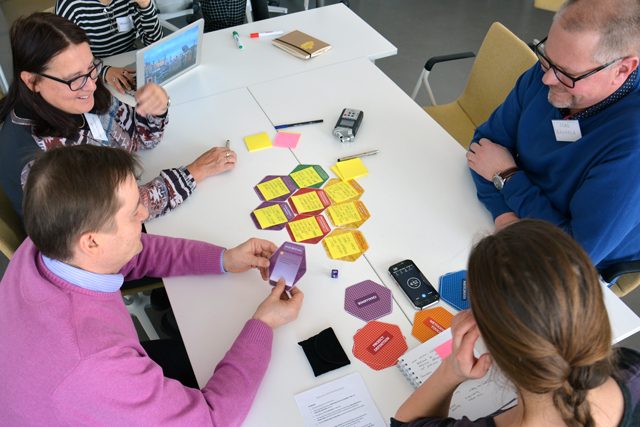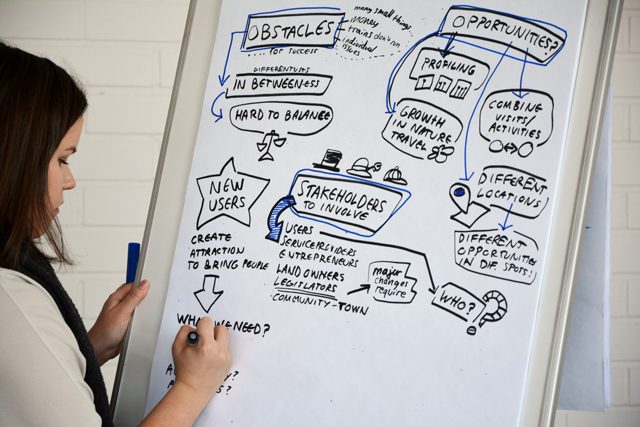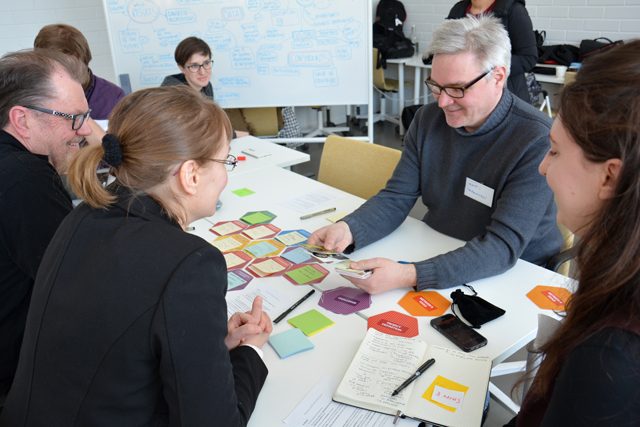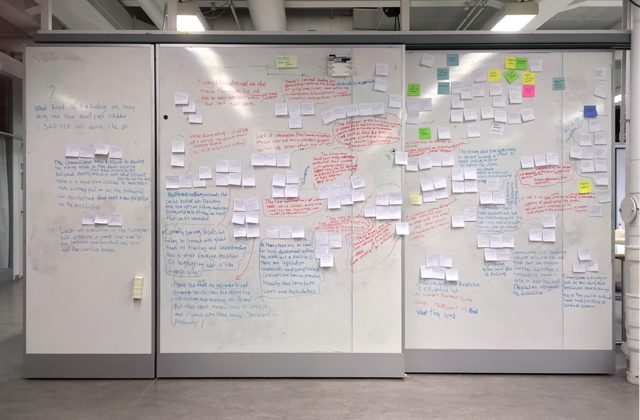This blog post reports on work-in-progress within the Design for Government (DfG) course! The post is written by one of the three groups working on the brief, ‘The Future of Finland’s Hiking Areas: New Uses, Users and Identity,’ by the Ministry of Agriculture and Forestry in collaboration with Metsähallitus. The group includes multi-disciplinary students from Aalto University’s MA programmes: Andrea Gilly and Ada Peiretti from Creative Sustainability; Katariina Kantola and Jinny Kim from Collaborative and Industrial Design; and Liisi Soroush from New Media Design and Production.
It was week 2 of DfG 2018. We had the great pleasure of hosting a workshop with participants from the Ministry of Agriculture and Forestry as well as Metsähallitus. The workshop consisted of three parts including a warm-up activity, ATLAS design game, and a reflection. This year, the workshop was planned as a joint effort between all three student groups, and two students from each group were responsible for facilitating different parts of the workshop. The workshop was a great place not only for getting a deeper understanding of the project brief, but also for getting to know the key stakeholders.


The focus in this year’s DfG is the future of state designated hiking areas (retkeilyalue). It is important to note that the hiking areas are different from national parks (kansallispuisto) in Finland. However, the public is not so aware of the difference, nor of the distinct development possibilities that the hiking areas offer.

For the main activity of the workshop, we developed our own version of ATLAS, a design game that aims to gather information in a fun and inclusive way. The questions posed throughout the game provided a chance for participants to discuss and reflect upon diverse aspects of the project such as goals and expectations. Even though the students were familiar with the project brief, the workshop provided an invaluable opportunity for us to grasp the complexity of the issue. We were also able to challenge assumptions and understand varying views and interpretations of the opportunities and challenges which weren’t evident in the brief.
“This is a very efficient method and you are using it really well! I admire this. This is good work for this kind of expert work and as a stakeholder involvement.”
– a participant comment on the workshop

After the workshop, each team analyzed what we learned from the workshop using affinity mapping. Through this process, we established several possible directions that will guide our design research forward. We are ready and can’t wait to see where our DfG journey will take us next!
The DfG course runs for 14 weeks each spring – the 2018 course has now started and runs Feb 20 to May 22. It’s an advanced studio course in which students work in multidisciplinary teams to address project briefs commissioned by governmental ministries in Finland. The course proceeds through the spring as a series of teaching blocks – Human Perspective, Systems Perspective and Intervention Perspective – in which various research and design methods are applied to addressing the project briefs. Blog posts are written by student groups, in which they share news, experiences and insights from within the course activities and their project development. More information here about the DfG 2018 project briefs. Hold the date for the public finale 09:00-12:00 on Tuesday, May 22!

